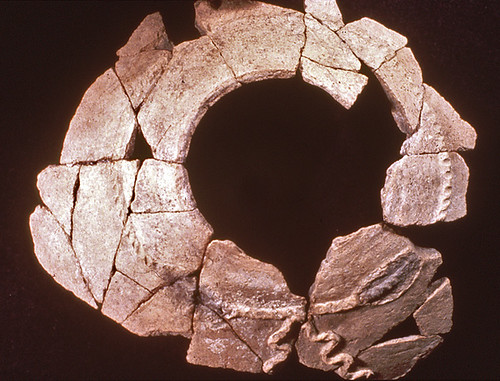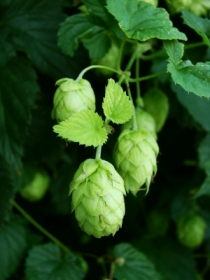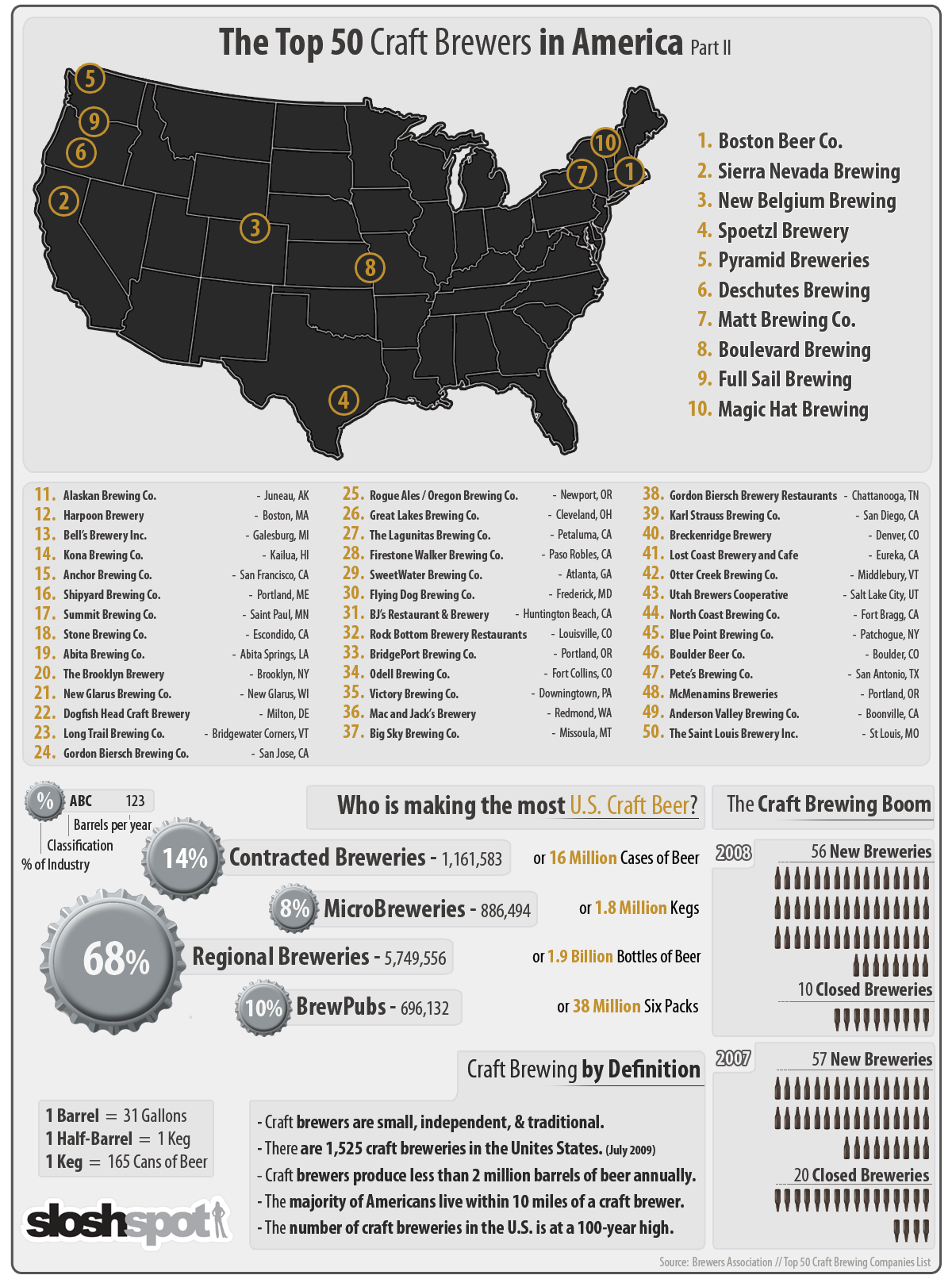 |
| Stones of Göbekli Tepe |
Readers will have noticed a significant slowdown in posts. There are a number of reasons for that. One, the summer is actually not when I generally end up at the Center for Wooden Boats, other than for the Festival. It's hot, it's busy on the docks, and I'm generally doing something else (even if that's just trying to cool down on the deck with a Negra Modelo). Two, most of my recent posts have been lengthy essays that take a while to research and write, my latest on Jay Bahadur's book being a prime example. Three, I've been cut off from blogging at work, or at least "while working." Distraction? What distraction? This limitation, however, has led to this post, because my new time killer at my desk has been catching up on National Geographic. The June 2011 issue has a fascinating article, "The Birth of Religion," on the archaeological site of Göbekli Tepe in southern Turkey. This site, radiocarbon dated to as early as 11,000 BC, is turning anthropological theory on its ear, because it is the earliest ceremonial structure yet unearthed and yet has no signs of agriculture. This could mean that "religion" may have led to sedentarism, not vice versa. It was these two sentences, however, that set my mind working: "One imagines chanting and drumming, the animals on the great pillars seeming to move in the flickering torchlight. Surely there were feasts; Schmidt [the chief archaeologist] has uncovered stone basins that could have been used for beer." So was launched my self-education on the (pre-)history of the beverage tied with rum as my favorite. I have condensed it down to the following, unapologetically subjective (and not really very condensed) Top Ten List. Credit goes to Chris Rowley at Foaming Head for laying the groundwork.
 |
| Reconstructed beer jar of Godin Tepe |
1. ca. 8,500 BC: Barley is domesticated. Anthropologists call it the "Neolithic Revolution"--the first transition from hunting and gathering to agriculture and established villages. This occurred in a variety of places at a variety of times, but one center was the "Fertile Crescent" that arches from the Nile Delta through the Levant to the Tigris and Euphrates in what is now Iraq. Barley was one of the first grains domesticated, based on evidence from sites like Jericho and Abu Hureyra. Beer and bread, or something in between, were not far behind. The Godin Tepe site in Iran has even given chemical evidence of beer dregs from 3,500 BC. The Sumerians were especially big beer drinkers. 6,000 years they ago wrote a hymn to the Goddess of Beer, Ninkasi, which also functions as the world's oldest brewing recipe; Ninkasi is now the name of a very fine brewery in Oregon. The brew of the time was "porridge beer," really a sort of mildly alcoholic bread that was drunk through straws from a tall pot. The first beer was really the first "ale," i.e. beer made from malted barley fermented at warm temperatures. This was the booze of choice from the Egyptian pharaohs to the kings and priests of Mesopotamia...and the peasants below. Unfortunately, two things killed the early reign of beer: the expansion of the Greeks, among whom wine was preferable, and the expansion of Islam, among whom no one drinks (legally) at all. But...
 |
| The alewife |
 |
| Hops |
 |
| A lagering cave in Bavaria |
4. ca. 1300: "Lagering" is created in Bavaria. Another solution to the preservation problem was, logically enough, cold storage. Without ice, the place to do it was caves. "Lagering" simply means cold storing. In Bavaria, clever brewers combined all three methods of helping beer keep longer: brewing to high alcoholic content, adding hops, and cold storing. This combination also created a more conditioned, clearer beer. The actual creation of bottom-fermenting yeast appears to have been a total accident; the "missing yeast" that crossed with existing yeasts in Bavaria has recently been found in Patagonia and somehow managed make it to Europe in the 15th century before Christopher Columbus. The first documentation of bottom fermentation is from 1474 in the "Nabburg Chronicle." "Lager," aka "beer," as we would now define it, was born.
5. 1516: The Reinheitsgebot is put into law. (Go ahead, say it out loud. Reinheitsgebot.) Ordered by William IV, Duke of Bavaria, the "Purity Law" limited the ingredients of beer to water, barley, and hops. German brewers still use the Reinheitsgebot as a mark of purity today, but what makes it critical to the history of beer is that the fact that the need to regulate brewing shows the scale to which beer making and beer drinking had reached by the 16th century. The Dark Ages were ending, and urbanization, industrialization, and the Renaissance were coming into full swing. Although the science of brewing--the measurement of temperature and alcohol, and thus control over brewing's variables--was a long ways off, this did not stop brewing from becoming an increasingly sophisticated and widespread craft. A "beer belt" emerged that stretched from Bohemia through Germany and the Netherlands to England. London became the center of it all: seat of an Empire, densely populated metropolis, industrial and economic powerhouse, and city where tipple accompanied every meal. Yet while the Continent was leaning increasingly towards "beer," in England ale was King. Hops was resisted for a long time but during the Tudor reign finally gained acceptance. In 1703, the term "pale ale" was used for the first time. Industrialization had led to the refining of coal into coke, which allowed more control over malting barley and thus "pale malts," a process developed in England in Burton-on-Trent. And then...
 |
| Brown malt |
6. ca. 1720: Porter is invented. Exactly who did so, and from what basis, is a matter of debate. One version, set in print in 1802 by a writer named John Feltham, states that porter was created by a Ralph Harwood in 1730 at the Bellin Shoreditch in London. His brew combined in a single product the taste of "three threads"--ale, beer, and "twopenny"--which was thus called initially "Entire" but was also called "Porter" after the workers who preferred it. This account is now considered by some apocryphal. A more likely story is that around 1720 porter evolved out existing brews using brown malts. Porter is significant not only for the evolution of style but also, more importantly, for the fact that it become the beer of the Industrial Age in Britain. Porter was the first beer to be shipped to drink, rather than being shipped to be aged at the local. It was the first to be produced and distributed on a national scale. Breweries making porter pioneered scientific advances like the use of thermometer and hydrometer. In 1817, the passing of a British version of the Reinheitsgebot a year before drove the invention by Daniel Wheeler of Black Patent Malt (as in patented, a sign of the industrial times), made in a rotating drum similar to a coffee roaster, which completely redefined porter. In short, porter was the epitome of British brewing for perhaps a century.
 |
| St. James Gate Brewery |
7. 1759: Arthur Guinness opens his brewery in Dublin, Ireland. Yes, yes, I am a charter member of the 1759 Society, believe that Guinness Stout is the ultimate liquid on Earth (except, maybe, for an 18-year-old Talisker), and have on my Bucket List to raise a pint with Colm Meaney and/or Paddy Moloney. The 9,000 year lease of St. James Gate Brewery for a measly 45 Pounds a year is, for people like me, the stuff of legend. But ignore the fanboy attitude for a minute. Guinness changed the world of beer. Guinness did not invent stout; stout is, really, a variant of porter subject to interpretation. Guinness didn't even start making porter until 1778. Then, in 1820, Guinness first marketed "Guinness Extra Stout." No beer brand has become more recognizable, more mythologized, more trademarked, or more closely tied to a nationality. Guinness has become a global empire, now brewed in almost 50 countries and sold in more than twice that. And I'm totally into it. Yet Guinness is the Dark Side to the real mass market, because...
 |
| Josef Groll |
It was back in Bohemia, however, that the industrialization of brewing processes produced what is now the single most dominant beer style almost everywhere in the world. The man responsible was Josef Groll, a Bavarian brought in to run the brand new, state-of-the-art "Citizen's Brewery" in the town of Pilsen in what is now the Czech Republic. In 1842, he introduced pilsner, named for the town. The use of coke in kilning had produced "golden" malt. Up at the Spaten Brewery, Gabriel Sedlmayer II the Younger (not kidding!) had--and some say his inspiration was pale ale--achieved a new level of isolating and purifying yeasts for lagered beer. Add Saaz "Noble" hops and soft water, and a blockbuster was made. The original still lives as Pilsner Urquell, literally "original pilsner" in German. Europe fell first: Germany (Beck's, for example), the Netherlands (Amstel, Grolsch, Heineken). Then, with massive emigration from Europe, it hit America, which had to this point still emulated its former colonial oppressors. Pilsner made Milwaukee famous--Pabst (originally Best), Blatz, Schlitz, and Miller. Finally, in 1860, a soap maker named Eberhard Anheuser purchased a struggling brewery in St. Louis, Missouri, which was taken over by his son-in-law, Adolphus Busch. Anheuser-Busch introduced Budweiser in 1876, named for the town of Budweis scarcely 65 miles south of Pilsen. "American pilsner," also simply known as "lager," was made even lighter and more friendly to mass production by the use of rice or corn syrup. As the 19th century closed, the descendants of Groll's brainchild had taken over the planet...and it didn't even taste like beer anymore.
 |
| Bill Urquhart (right), microbrewing pioneer |
9. 1975: Bill Urquhart opens Litchborough Brewery in Litchborough, Northamptonshire, England. Britain had a rough twentieth century. Two World Wars. The collapse of an empire. Margaret Thatcher. And the near death of traditional brewing. Ale lovers not only had to contend with the juggernaut of mass-produced lager but also the increased consolidation of the brewing industry. By the 1970's, the dominant companies were known as the "Big Six:" Whitbread, Scottish & Newcastle, Bass Charrington, Allied Breweries, Courage Imperial, and Watneys. In 1971, there was a rebellion. Four drinkers in St. Albans, Hertfordshire, created the Campaign for Real Ale (CAMRA). These militants have organized, fought, and lobbied for the real thing and real pubs for forty years; there are now over 120,000 members. Meanwhile, in Northampton, the Phipps Brewery, which had existed since 1801, was bought by the evil Watneys, and all cask ale production was shut down in favor of keg bitters. Watneys became CAMRA's archenemy. In 1974, Watneys partnered with Carlsberg, shut down ale production entirely, almost completely demolished Phipps, and made a lager plant. Fortunately, a year later, Phipps' last head brewer, Bill Urquhart, opened his own brewery in the nearby village of Litchborough dedicated to cask ale. This was, by most accounts, the first microbrewery, and students of Urquhart became pioneers in the movement. Yet it is still a war in Britain. A 2001 article for BBC News Online states that what is now a further consolidated, multinational Big Four accounts for 85% of beer drunk in the UK. Biggest of all is InBev (or, more recently, Anheuser-Busch InBev), which makes Stella Artois lager. I would call Stella the Bud of Britain; when I was in London, Stella was always in bulk and always on sale at the local Tesco Market. Indeed, the same article says that 62% of all beer drunk in England is lager. There is a middle ground: "national" breweries like Greene King that run their own chains of pubs, and "regional" breweries that keep cask ales alive generation-by-generation and resist buyout. The microbrewery movement, however, came to fruition among the Yankees...
 |
| Yakima Depot, former home of Grant's Pub, RIP |
10. 1982: Bert Grant opens Yakima Brewing in Yakima, Washington. Most of the twentieth century has not been kind to the American beer lover. The Temperance Movement led to the disaster of Prohibition. Not only did this mean the obvious, but also The Twenty-first Amendment and the Volstead Act started a chain of events that led to the near extinction of small-scale brewing. Between 1915 and 1934, the number of breweries in the United States dropped from over 1,300 to less than 800. The big breweries before Prohibition--Schlitz, Pabst, Blatz, and Anheuser-Busch--survived by making "near beer" that was barely alcoholic at all but kept the equipment running and made further acceptable watering down beer. Even after Prohibition had been toppled, temperance mentality made sure that truly local brewing was kept impossible: Post-repeal legislation prevented brewers from owning saloons, which by consequence made on-site brewing illegal. A further blow to real beer was dealt in World War II, when grain rationing led rice and corn to become even more common fillers. Beer production increased as the number of breweries continued to decrease, because the big breweries not only became more efficient but also bought out smaller companies, sometimes just for their distribution. Between the mid-1940's and 1980, the market share of the five largest breweries grew from 19% to 75%. And then, the coup de grace. In 1967, biochemist Dr. Joseph Owades invented a process that used an enzyme that made malt dextrins--unprocessed sugars--into fermentable sugars. More alcohol, less carbohydrates. In 1975, this new kind of beer had a brand name: Miller Lite. Then Coors Light, then Bud Lite. Beer...was no longer beer.
But the inevitable consequence of oppression will be, eventually, revolution. And the opening salvo came from...Jimmy Carter?! In 1978, Carter legalized homebrewing. Hell, even the joke that was "Billy Beer" helped to promote a regional brewery, Falls City in Louisville, Kentucky. The true birth of the Microbrewing Renaissance is often said to have occurred at New Albion Brewery in Sonoma, California, in 1976, when they--going back to British inspiration--served their first ale. Unfortunately, they closed six years later, well before the big boom. I will stand by many and claim that the Pint Heard 'Round The World was served in 1982, when Scotsman Bert Grant opened Yakima Brewing in an old opera house in Yakima, Washington, an area known for its hops growing. Grant's was the first brewpub to open since Prohibition. Michael "Beer Hunter" Jackson says Grant saved the world. Grant later moved his pub to the side of the railroad tracks, and this place was for me, after moving to Seattle, reason enough to drive two hours over the mountains--a pint of Imperial Stout (a style, it is said, that Grant introduced to the U.S.) and a barbeque burger in an old train depot. A version of Heaven. Unfortunately, it, too, is now gone, driven to closure by finances and State regulations. Ae fond kiss to a Grant's, not only revolutionary, but also one of my all-time favorites.
We are now in a grand era of brewing. There are over 1,700 breweries, including about 1,000 brewpubs, in the United States, according to the Brewers Association. The problem with the term "microbrew," however, is that calling a brewery a "micro" is kind of like calling a band "Indie." Is Boston Beer, aka Samuel Adams, truly a micro when they produce nearly 2 million barrels a year? Considering that Anheuser-Busch makes something like 125 million barrels of beer a year, Sam Adams seems small in comparison. The preferred term now is "craft brewer," which the Brewers Association defines as "small, independent, and traditional." They would classify Sam Adams as a "regional brewery." Terminology aside, U.S. brewing is at least as healthy as it was before Prohibition and in a true Golden Age of creativity.
So, put down your glass or your bottle for a minute. Give thanks to the ancients who created civilization; it may have led eventually to global environmental crisis, but it brought us beer. Give thanks to the alewives and the friars who laid the foundation for ale culture. Give thanks to the inventors, scientists, and entrepreneurs who have made beer safer, tastier, and more varied. Give thanks to Arthur Guinness for making a fine, fine stout that has become the very symbol of Ireland. Give thanks to Bill Urquhart, Bert Grant, and countless craft brewers for saving beer from watery, flavorless doom. And give thanks to Jimmy Carter for, well, being generally awesome. Every one's heard it before, and maybe it's not even a real quote, but it's a worldview:
"Beer is living proof that God loves us and wants us to be happy." --Benjamin Franklin.
 |
| Let there be beer |


No comments:
Post a Comment